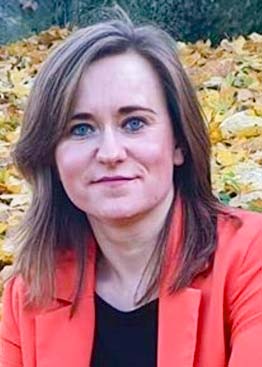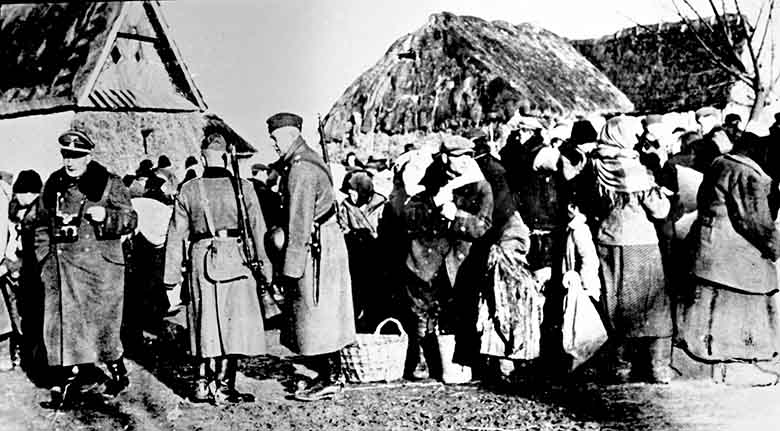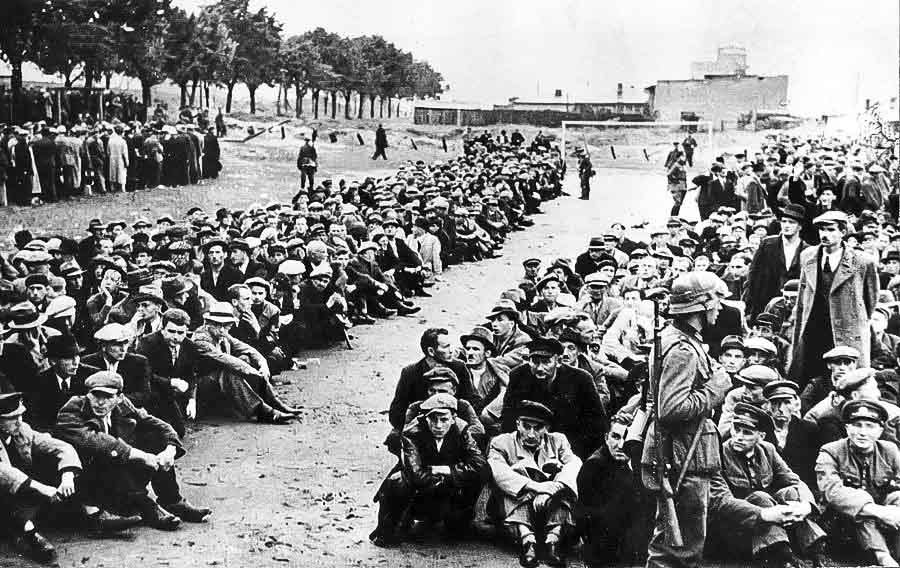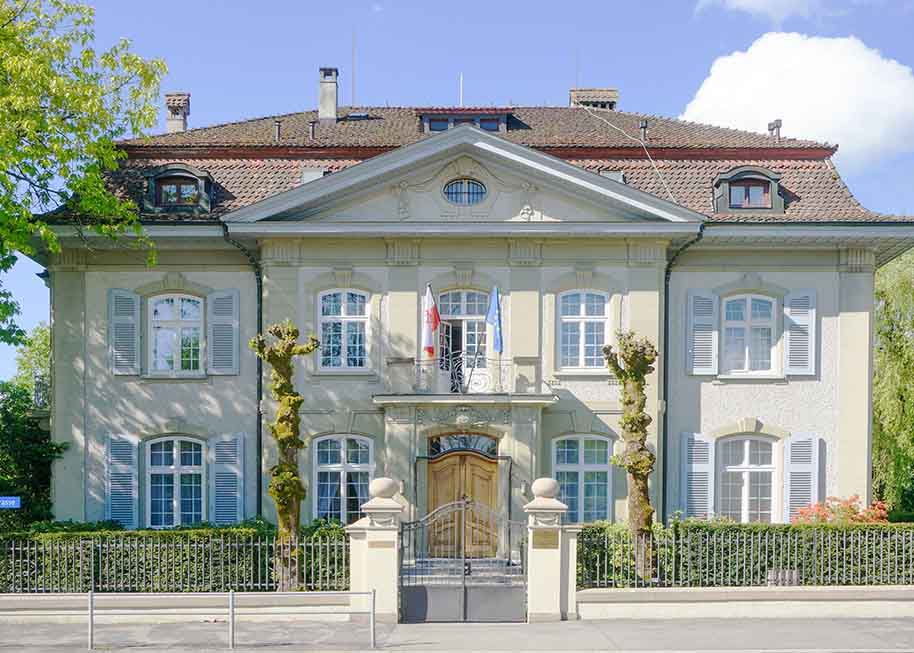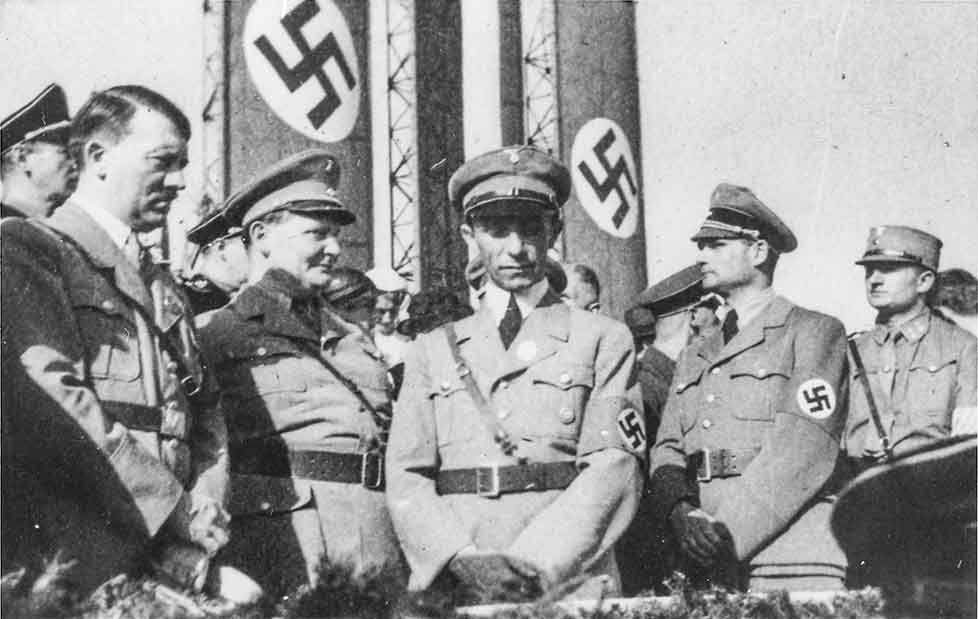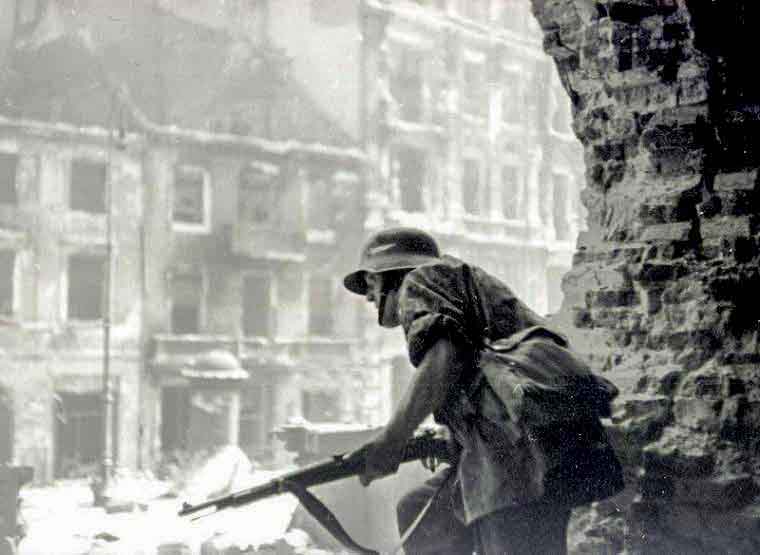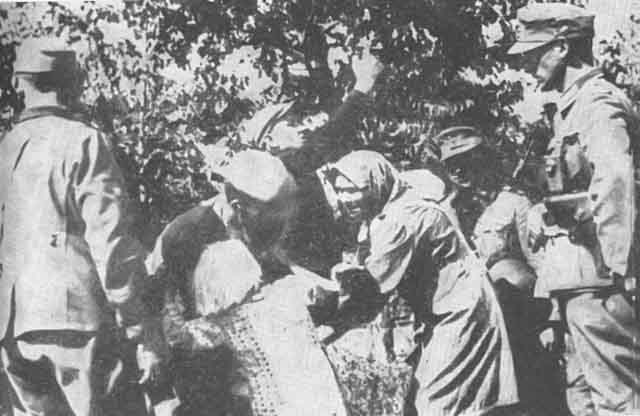From the very first days of fighting, the Germans committed heinous crimes against the local population and Polish Army soldiers, thus violating the provisions of the Geneva Convention. They began the systematic extermination of the Polish population in accordance with the words of Adolf Hitler, spoken on August 22, 1939, during a briefing with senior army commanders regarding the attack on Poland: "The destruction of Poland is our first task. The goal must not be to reach some designated line, but to destroy living forces. […] Be merciless. Be brutal."
A significant portion of the executions of Polish civilians was caused by the fact that the invading German troops suspected the civilian population of participating in warfare. The Germans were taught that every Pole was a saboteur who constantly organized ambushes. They searched among the civilians for men with short hair and those wearing military paraphernalia. People who tried to escape at their sight or made violent gestures were shot. According to the findings of the author of this article, males constituted 92 percent of all victims of Wehrmacht soldiers in the Stopnica district. The Germans' beliefs about the omnipresent threat from partisans were described in historiography as "partisan delusions". In reality, in September 1939, there were no partisans to which large numbers of the Polish population could belong.
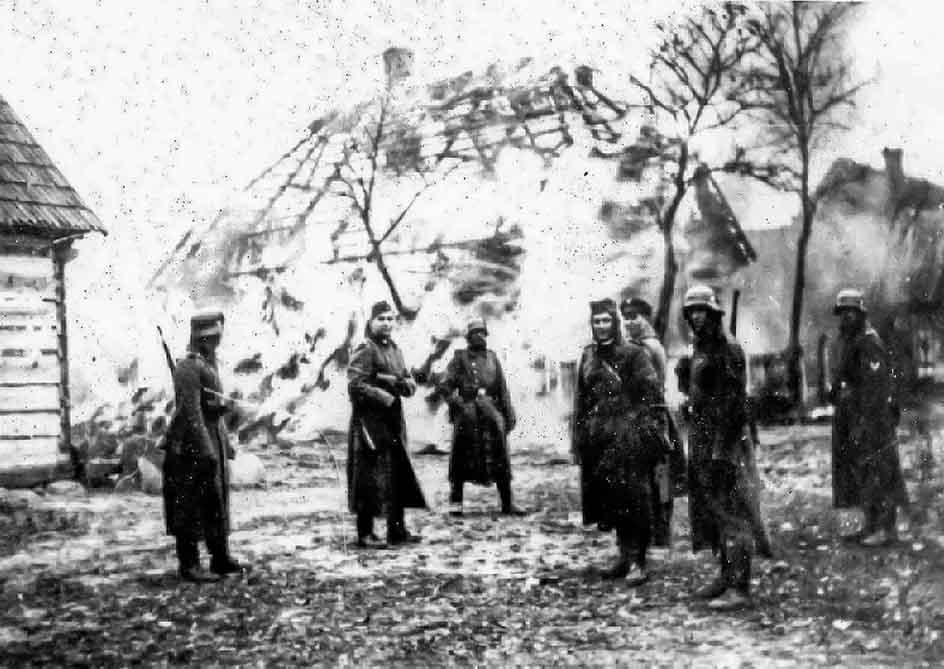
(Source: DlaPolonii.pl)
A typical action of Wehrmacht soldiers was to take revenge on the local population for resistance by Polish Army units. On September 9, 1939, the largest battle in the Stopnica district took place in Bronin, in the Busko-Zdrój commune. As a result of the fights fought by the 22nd Mountain Infantry Division with the Separate Unit of the VII Corps, at least 200 Germans were killed and several hundred were wounded. The war operations near Bronina did not spare the village inhabitants. Most of them took shelter in basements at that time. On September 10, 1939, in the afternoon, the Germans drove about 20 refugees from Silesia to the village. When the column passed by Jan Wójcik's buildings, the Germans led four men out of the yard: Karcz from Smogorzów [first name unknown – KTK], Władysław Pindral, and Jan and Józef Wójcik. They were placed at the head of the column as the first four, and then ordered to head towards Szczaworyż. On the edge of the village, one of the Silesians made a successful escape attempt. The above events were to be the direct cause of further actions by the Wehrmacht soldiers. The furious Germans drove the men from the first four to the nearest house, owned by Władysław Ciepliński. They locked them in a building into which they threw grenades. The severely wounded Pindral managed to escape, but the Germans shot him when he tried to climb over a wooden fence. A total of five men died in Ciepliński's house.
On September 9, 1939, in the evening, the Germans entered the village of Prusy in the Stopnica commune. During a skirmish with a Polish Army unit, Wehrmacht soldiers burned 16 farm buildings belonging to local farmers. The residents, fearing the Germans, took refuge in basements and in a quarry near the village, where about 30 people hid. The first German units, apart from burning the 16 buildings mentioned above, did not harm the population. However, the situation changed after the arrival of more Germans. Marian Radosz reported: "When the Germans entered, one of the German officers said that we should be pelted with grenades and murdered. He said this to his soldiers. There was also another German officer. I was about 12 years old at the time, but I remember the course of events precisely. The second officer said to take only the men out and shoot them." The Wehrmacht soldiers murdered 11 people at that time.
Numerous casualties and property damage were the result of German bombing raids. The Luftwaffe attacked railway stations, airports, communication routes and extremely important bridges and crossings over the Vistula River, in order to prevent Polish troops from regrouping and organizing a planned defense on the eastern side of the river. German planes also strafed and bombed rural areas, killing individuals and destroying property. Masses of civilians fled from the German troops, heading towards Szczucin, where there was a bridge over the Vistula River. The escapees spread the news that Wehrmacht soldiers were murdering young men.
As a result of these rumours, the local population also joined them. Among them were residents of Biechów: Stanisław Matus, Jan Nutowicz and Stanisław Szczygłowski. Numerous hypotheses were created about the crimes committed in Rataje Karskie. According to one of them, when the refugees arrived in the above village (on 6 or 7 September 1939), they received news of the destruction of the bridge in Szczucin. People began to gather on the road and in the fields next to Antoni Kosiński's mill. At that time, Luftwaffe planes flew over and fired at them. Eight people died, including two residents of Biechów – Stanisław Matus and 16-year-old Jan Nutowicz – and a priest whose name has not been established. Another theory says that the eight people mentioned above were murdered as a result of the fighting between the Wehrmacht and the Polish Army.
A common phenomenon accompanying the march of German troops was the mass terrorization of residents and breaking the resistance of the population by taking hostages, whose lives were to secure the occupier's actions. In Pińczów, the Germans herded the local population and refugees into the church and the church cemetery. They were kept under surveillance without food or drink for two days. After that time, one of the German officers stated that he would spare their lives on condition that they remained loyal to the Third Reich. First, women and children were released, and then the men. Most of them found their houses burned down upon their return. After the war, Zofia Janda testified before the District Commission for the Investigation of Nazi Crimes in Kielce: "(...) After the Germans released us, we found our house burned down along with all our belongings. Our family was left without any means of subsistence. For a dozen or so days we lived in the garden (...)".
In September 1939, the Germans also committed numerous crimes against Polish Army soldiers. The Wehrmacht soldiers were bitter about the enemy's tactics, when Polish soldiers, instead of fighting in open battle, preferred to defend themselves in forests or in houses. In the Germans' opinion, this was an insidious way of fighting, resulting from the alleged "inferiority of the Slavs".
On September 8 or 9, 1939, on the border of Busko-Zdrój and Łagiewniki, on the so-called Cold Waters, a German reconnaissance plane of the "Storch" type opened fire on a cavalryman. He was buried in the parish cemetery in Busko-Zdrój.
On September 12, 1939, Wehrmacht soldiers once again violated the Geneva Convention, killing seven Polish Army soldiers who had been taken prisoner in the evening of September 8, 1939, in Wiślica, on the meadows called "Browar". Most likely, they came from the Nowy Sącz region, as evidenced by documents found on them. As a result of the fighting in Wiślica and the surrounding area, 200 Polish Army soldiers were taken prisoner, imprisoned in the local parish church, and then taken towards Kazimierza Wielka. One of them, Corporal Jan Pietruszka, was shot on September 17, 1939, simply because he got up from the church bench with too much difficulty.
The Germans also committed numerous crimes against the Jewish population. On September 4, 1939, they shot two Jews in Chmielnik, and on the night of September 4–5, 1939, 14 people of Jewish nationality. In the first days of September 1939, four Jews were hanged in the town: "When the Germans entered Chmielnik, they immediately killed four Jews, hanging them on a beam in the gate of the house, next to the hospital. Nobody was allowed to take them down." On September 7 and 8, 1939, in Pińczów, Wehrmacht soldiers shot about 50 people, both Poles and Jews. Among them was the owner of a haberdashery store, Gryngras Majloch. A Jew, Cymerman, also died: "I was present in Pińczów on September 7 and 8, 1939, I saw the Germans shooting Jews. For example, I saw the shot Jew Grangras [real name: Gryngras – K. TK] and Cymerman. The first of them was shot next to the former post office, the second next to the park in the market square."
In the Stopnica district in September 1939, 170–171 people were shot, while in the Pińczów district at least several dozen people were shot. In the first case, the above data only concern people whose personal details were established. It can be assumed that the scale of the crime was higher. It is also worth emphasizing that the cited figures concern only two districts: Stopnica and Pińczów. One can only assume how great personal losses were suffered by residents of all of Poland in September 1939.
Translation from Polish by Andrew Wozniewicz.



